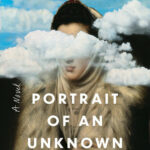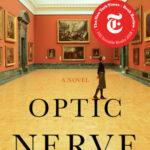María Gainza
María Gainza was born in Buenos Aires, where she still resides. She has worked as a correspondent for The New York Times in Argentina, as well as for ARTnews. She has also been a contributor to Artforum, The Buenos Aires Review, and Radar, the cultural supplement from Argentine newspaper Página/12. She is coeditor of the collection Los Sentidos (The Senses) on Argentinean art, and in 2011 she published Textos elegidos (Selected Texts), a collection of her notes and essays on contemporary art. Optic Nerve is her first work of fiction and her first book to be translated into English.
Thomas Bunstead is a writer and translator based in East Sussex, England. He has translated some of the leading Spanish–language writers working today, including Eduardo Halfon, Yuri Herrera, Agustín Fernández Mallo, and Enrique Vila–Matas, and his own writing has appeared in publications such as Kill Author, The White Review, and The Times Literary Supplement. He is an editor at the translation journal In Other Words.
Books
Portrait of an Unknown Lady
A Novel
A New York Times Book Review Editors' ChoiceNew York Times Notable author María Gainza, who dazzled critics with Optic Nerve, returns with the captivating story of an auction house employee on the trail of an enigmatic master forger
In the Buenos Aires art world, a master forger has achieved legendary status. Rumored to be a woman, she specializes in canvases by the painter Mariette Lydis, a portraitist of Argentinean high society. But who is this absurdly gifted creator of counterfeits? What motivates her? And what is her link to the community of artists who congregate, night after night, in a strange establishment called the Hotel Melancólico?
On the trail of this mysterious forger is our narrator, an art critic and auction house employee through whose hands counterfeit works have passed. As she begins to take on the role of art-world detective, adopting her own methods of deception and manipulation, she warns us “not to proceed in expectation of names, numbers or dates . . . My techniques are those of the impressionist.”
Driven by obsession and full of subtle surprise, Portrait of an Unknown Lady is a highly seductive and enveloping meditation on what we mean by "authenticity" in art, and a captivating exploration of the gap between what is lived and what is told.
Optic Nerve
"In this delightful autofiction―the first book by Gainza, an Argentine art critic, to appear in English―a woman delivers pithy assessments of world–class painters along with glimpses of her life, braiding the two into an illuminating whole." ―The New York Times Book Review, Notable Book of the Year and Editors' ChoiceThe narrator of Optic Nerve is an Argentinian woman whose obsession is art. The story of her life is the story of the paintings, and painters, who matter to her. Her intimate, digressive voice guides us through a gallery of moments that have touched her.
In these pages, El Greco visits the Sistine Chapel and is appalled by Michelangelo’s bodies. The mystery of Rothko’s refusal to finish murals for the Seagram Building in New York is blended with the story of a hospital in which a prostitute walks the halls while the narrator’s husband receives chemotherapy. Alfred de Dreux visits Géricault’s workshop; Gustave Courbet’s devilish seascapes incite viewers “to have sex, or to eat an apple”; Picasso organizes a cruel banquet in Rousseau’s honor . . . All of these fascinating episodes in art history interact with the narrator’s life in Buenos Aires―her family and work; her loves and losses; her infatuations and disappointments. The effect is of a character refracted by environment, composed by the canvases she studies.
Seductive and capricious, Optic Nerve marks the English–language debut of a major Argentinian writer. It is a book that captures, like no other, the mysterious connections between a work of art and the person who perceives it.
20 Jay Street #704
Brooklyn, NY 11201
646.926.0805 | contact@catapult.co






